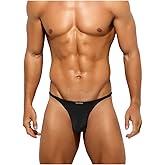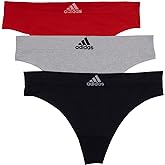The world of children’s fashion has evolved significantly over the years, with trends shifting from traditional attire to more modern, sometimes controversial choices. One such topic that has sparked debate among parents, educators, and child psychologists is the appropriateness of thong underwear for children. This article delves into the ongoing discussion of comfort versus style, examining the implications of introducing thong underwear into children’s wardrobes.
The Rise of Children’s Underwear Fashion

In recent years, children’s underwear has transitioned from simple, functional designs to fashionable items that are marketed towards style-conscious kids. Brands are increasingly offering a variety of underwear styles, including thongs, which has led to a mixed response from parents and guardians.
- The introduction of vibrant colors and playful patterns
- Celebrity endorsements and influence on children’s fashion
- Availability of styles that appeal to different age groups
This shift has raised questions about the appropriateness of certain styles, particularly thongs, which are traditionally associated with adults. The debate centers around whether these items should be considered acceptable for children, as well as the implications for their comfort and self-esteem.
Comfort: The Primary Concern

When it comes to children’s clothing, comfort should be a top priority. Children are active and require clothing that allows for free movement. Here are some key considerations regarding comfort in children’s underwear:
- Material: The fabric used in underwear significantly affects comfort. Natural fibers like cotton are breathable and soft, while synthetic materials may cause irritation.
- Fit: Proper fit is crucial for comfort. Underwear that is too tight can cause chafing, while loose-fitting styles may lead to slippage and discomfort.
- Design: The design of thong underwear may not be suitable for children, as it often lacks coverage and support compared to traditional styles.
A study conducted by the American Academy of Pediatrics emphasized the importance of comfort in children’s clothing, stating that ill-fitting or uncomfortable underwear can lead to distractions during play and learning. Therefore, parents must consider whether thong underwear provides the necessary comfort for their children.
Style: The Influence of Fashion Trends

On the other side of the debate, style cannot be ignored. Children today are exposed to fashion trends at a young age, often influenced by social media and popular culture. Some parents argue that allowing children to choose their underwear style can promote individuality and self-expression. Here are some factors that contribute to the style aspect:
- Peer Influence: As children grow, peer opinions become increasingly important. Wearing trendy underwear may boost confidence among friends.
- Media Representation: Advertisements and television shows often portray children in various stylish clothing, including thongs, normalizing their use.
- Parental Attitudes: Some parents embrace contemporary fashion trends and believe in allowing their children to express their style choices.
Yet, the question arises: at what age should children be allowed to wear thong underwear? Many experts suggest that children should be able to make choices about their clothing, but this should be balanced with considerations of age-appropriateness and the messages being conveyed through these choices.
Psychological Perspectives on Clothing Choices

The psychological impact of clothing choices on children cannot be understated. Clothing can influence a child’s self-esteem, body image, and confidence levels. According to a study published in the Journal of Child Psychology and Psychiatry, children often equate their clothing with their social status and acceptance among peers.
When it comes to thong underwear, the psychological implications can be particularly complex:
- Body Image: Wearing revealing underwear like thongs may affect how children perceive their bodies and their self-worth.
- Sexualization: Introducing thong underwear at a young age can contribute to the sexualization of children, which is a growing concern among parents and educators.
- Confidence versus Pressure: While some children may feel confident wearing stylish underwear, others may feel pressured to conform to trends, leading to anxiety and discomfort.
Case Studies and Real-Life Examples

Various case studies have highlighted the impact of children’s clothing choices on their overall well-being. For instance, a survey conducted by the National Institute of Health found that children who were allowed to express their clothing preferences reported higher levels of self-esteem and satisfaction.
Conversely, there have been instances where parents reported concerns about their children’s choices leading to bullying or teasing among peers. One mother shared her experience of buying her daughter a thong, only to find that it became a point of ridicule at school. This led to her daughter feeling self-conscious and embarrassed, prompting the mother to reconsider her decision.
The Role of Education and Guidance

To navigate the complexities of children’s fashion choices, education and guidance are essential. Parents and caregivers should consider the following strategies:
- Open Communication: Encourage discussions about clothing choices and their implications. Allow children to express their opinions while guiding them towards age-appropriate options.
- Educate About Body Image: Teach children to appreciate their bodies and understand that clothing should enhance their comfort and confidence, rather than conform to societal pressures.
- Set Boundaries: While allowing for personal expression, parents may choose to set limits on certain items, such as thong underwear, based on age and maturity.
Conclusion: Finding the Balance
The debate over children’s thong underwear ultimately boils down to a balance between comfort and style. While the fashion landscape continues to evolve, it is crucial for parents and guardians to prioritize comfort, self-esteem, and age-appropriateness in their children’s clothing choices.
By fostering open communication and understanding the psychological implications of fashion, caregivers can help children navigate their style preferences in a healthy and supportive way. As trends come and go, the focus should always remain on what is best for the child’s well-being, ensuring that they feel confident and comfortable in their own skin.


